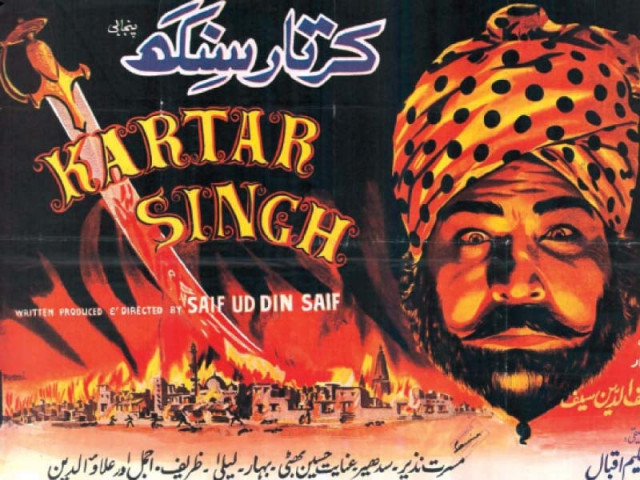
The film’s screening was part of wider Independence Day celebrations held at Lok Virsa, and was attended by many including dedicated movie-goers and families.
The black and white classic, produced and directed by Saifuddin Saif, depicts the violent separation of the 1947 partition. The film is believed to be based on real-life events, and was a blockbuster in its time.
The film takes place in a symbolic Punjabi village, where Sikhs, Muslims and Hindus live in harmony. The main characters are ‘Prem Nath’, a revered Hindu man, ‘Umer Din’, a Muslim veteran from World War II, and a Sikh man and a petty thief named ‘Kartar Singh’.
When the Indian sub-continent is partitioned, Muslims in the village including Din and his love interest, Mussarat Nazir, flee amid the carnage for their new supposed home, Pakistan. Din’s sister Laila is abducted by Sikhs during the chaos. Laila is rescued and sheltered by an elderly Sikh man, and when the man’s son attempts to force himself onto the young woman, the old man kills him. The Sikh then sends word to Din of his sister’s safety.
Meanwhile, as part of the border patrol, Din scuffles with Singh during one of the Sikh raids on the border. Din shoots him, but Singh survives and has a change of heart and begins to seek redemption.
Singh decides to reunite Din with his brother, who is under the care of Nath. As Singh approaches the border, Din guns him down, thinking his approach to be another raid.
The movie encapsulates the trauma and horror of scattered families, lost children, and the deaths of millions.
Parallels may be drawn between the 1959 classic and the recent Bollywood blockbuster ‘Bajrangi Bhaijaan’ which shows the consequences of partition, 68 years later. Although both films depict the negative sentiments and inculcated paranoia between Hindus and Muslims, as well as the ‘shoot-to-kill’ policy at the border, Bajrangi Bhaijaan has a more uplifting ending.
After the screening, a discussion was held where the audience shared their sentiments and opinions on the film.
The film club will continue to play various classic films, both foreign and domestic, every Saturday at Lok Virsa.
Published in The Express Tribune, August 17th, 2015.


















COMMENTS
Comments are moderated and generally will be posted if they are on-topic and not abusive.
For more information, please see our Comments FAQ